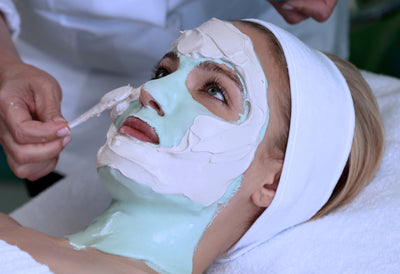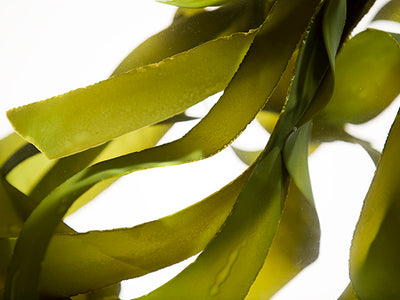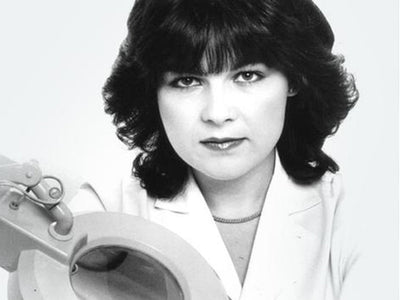10 Reasons Why Seaweed is the Best Ingredient on Earth

After meeting with marine biologists all over the world, it became evident to our Founder and CEO Lydia Sarfati, that seaweed was an excellent natural source for health, beauty, and wellness.
Here are the reasons why we love seaweed and believe it should be part of your everyday life!
-
Seaweed is natural.
Generally, seaweed is grown without pesticides and is not genetically modified, so you’re getting just what Mother Nature intended. Far from discouraging other creatures from foraging and interacting with the plants, seaweed farming is sometimes used to increase the biodiversity in oceans and can even have the added benefit of protecting coral reef environments.
-
Seaweed has been found to be connected to our health and the human brain.
According to the Journal of Applied Psychology, “Seaweeds produced under controlled conditions offer boundless opportunities to satisfy the known requirements for brain health and could readily play important roles in improving overall human health and well-being.” ²
² Consumption of Seaweeds and the Human Brain, M. Lynn Cornish & Alan T. Critchley & Ole G. Mouritsen, Journal of Applied Psychology, Dec. 2016
-
Seaweed is loaded with vitamins, minerals and trace elements.
One liter of seaweed contains the same concentration of elements found in 10,000 liters of seawater. Seaweeds have no roots, stems or leaves but rather have parallel structures including holdfasts, stipes and blades. The seaweed plant thus feeds through osmosis, absorbing minerals and vitamins from the seawater. Because of its feeding process, seaweed becomes a dense concentration of vitamins, minerals, trace elements, macro elements, phytohormones, amino acids, proteins and lipids. By using a proprietary extraction process, our chemists expel the intracellular fluid to retain vitamins, minerals, trace elements and amino acids to create our pure seaweed filtrate.
-
Seaweed has multiple cosmetic benefits.
Aside from being loaded with essential vitamins, minerals, trace elements, amino acids and natural anti-oxidant material such as phlorotannins, sulfated polysaccharides, fucosterol and fucoxanthins, seaweed is known to:
- Decrease the appearance of oil
- Diminish the appearance of fine lines and wrinkles
- Help exfoliate the skin
- Help to moisturize the skin to make it feel and look soft and smooth
-
Seaweed can be sustainably harvested.
Through mindful farming practices, seaweed can be sustainably harvested to minimize impact on the environment. Grown and cut in such a manner as to leave part of the seaweed intact for regrowth, there are seaweed beds today that are over 50 years old still producing! In fact, we have worked with scientists and farmers to sustainably harvest several species of nutrient-rich seaweed for use in our products. We partner with sustainable harvest farmers off the Maine coast, and with consult with Repêchage Board Member Charles Yarish, Ph.D., professor of Ecology & Evolutionary Biology at the University of Connecticut, Stamford, CT, to ensure we have the least ecological impact possible!
-
There are so many kinds of seaweed with so many different purposes.
With over 10,000 species in existence, the benefits of seaweed are almost infinite. For cosmetic usage, we have found the following to be the most beneficial, and use these seaweeds throughout our range of skin care collections:
LAMINARIA DIGITATA
A brown seaweed found in the upper intertidal and shallow subtidal marine environments. This seaweed is often called the horsetail kelp and is a natural source of 12 vitamins including B12, C, E, K and beta carotene, 18 amino acids, and as many as 42 trace elements. Laminaria Digitata is renowned for its ability to help moisturize the skin
CODIUM FRAGILE (SUBSP. ATLANTICUM)
A green seaweed anchored to rocks from 1 cm to a few many meters in size found in the intertidal to shallow subtidal marine environments with branched cylindrical fronds. Known to instantly help boost moisture.
ASCOPHYLLUM NODOSUM
A brown seaweed, which thrives in the upper intertidal and shallow subtidal marine environments in the North Atlantic Ocean. It is often called knotted wrack or rockweed. It is rich in vitamins, minerals, and amino acid, fucoidan and alginic acid. Helps skin look smooth and soft.
ULVA COMPRESSA
Green sheet and tubular seaweed found in many near shore environments around the globe. This helps skin look and feel firmer.
AHNFELTIA PLICATA
A subtidal red marine algae from the coast of the Hawaiian Islands and now found along the coasts of the North Atlantic Ocean. Helps to restore moisture and renew the appearance of the skin.
ULVA LACTUCA
A green seaweed found in the intertidal and shallow subtidal marine environments all over the world. This helps reduce the appearance of visible signs of aging, diminishing the appearance of fine lines.
SACCHARINA LATISSIMA
This brown seaweed is known as the sugar kelp. It found in the shallow subtidal cold water environments in the Atlantic and Pacific Oceans. It too is rich in many vitamins, minerals, trace elements, amino acids, and alginic acid. This helps reduce the appearance of oil on the skin.
FUCUS VESICULOSUS
This brown macroalgae is often called rockweed. It found in the intertidal to shallow subtidal marine environments of the North Atlantic Ocean. It is rich in vitamins, contains fucoidan, and alginic acidic. This seaweed helps with deep cleansing and reducing the appearance of oil.
PORPHYRIDIUM SSP.
A red, unicellular seaweed that is high in essential fatty acids as well as Vitamins B and C. Helps improve the appearance of oily skin.
LITHOTHAMNIUM CALCAREUM
A red algae whose main feature is the formation of calcium carbonate in its cell walls. Helps skin look and feel firmer, more toned.
PELVETIA CANALICULATA
A brown algae found attached to rocks of the upper intertidal rocky shores in the eastern Atlantic Ocean. Helps reduce the appearance of dark spots.
-
Seaweed and humans are very alike.
Researchers have found that seawater and human plasma, our intercellular fluid, are similar. The sea covers over two-thirds of our planet, and, perhaps as no coincidence, the human body is made of two-thirds water as well.
-
Seaweed is one of our most important resources.
Seaweeds are abundant and ancient autotrophic organisms that can be found in virtually all near-shore aquatic ecosystems. They form an important living resource of the near shore environment. For millennia, people have collected seaweeds for food, fodder for animals and it has been used in fertilizers and soil enhancers. More recently, seaweeds have become important sources of various biochemicals, and are important in medicine and biotechnology. Containing phycocolloids, or polysaccharides, they are also used in toothpaste, soaps, shampoos, cosmetics, skin care, milk, ice cream and many other items.¹
¹C Yarish and R Pereira, “Mass Production of Marine Macroalgae,” The Encyclopedia of Ecology, Sven Erik Jergensen and Brian D. Fath.
-
Seaweed has been used therapeutically for centuries.
Thalassotherapy, stemming from the Greek word for sea, “thalassos”, is a term coined to describe the usage of seawater for therapeutic purposes and preventative measures based on the belief that immersion in seawater helps promote wellbeing and cleanses the system. Bathing in seawater is one of the deepest rooted bathing traditions.
-
Seaweed has stood the test of time.
The first form of life was derived from unicellular marine microalgae, which appeared in the ocean over 3.5 billion years ago. There are over 40,000 different species of marine micro-and macroalgae worldwide. The oldest of the marine macroalgae with fossils being found are at least 1.2 billion years old. Scientists believe that marine algae may produce over 70% of the earth’s oxygen.
With all these wonderful points, is it any wonder why Lydia made this ingredient her life’s work and is now known as the Queen of Seaweed? We take our seaweed passion very seriously, and you can be sure that with every skin care product you use, our commitment to quality ingredients will shine through.








